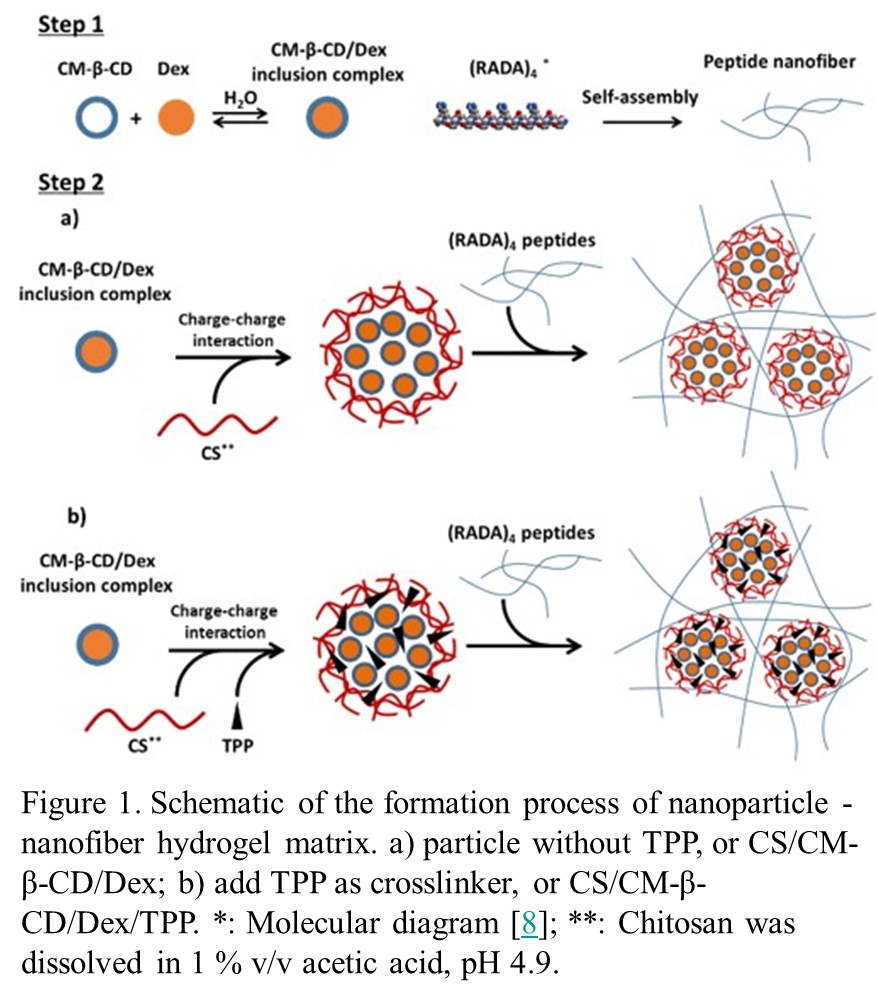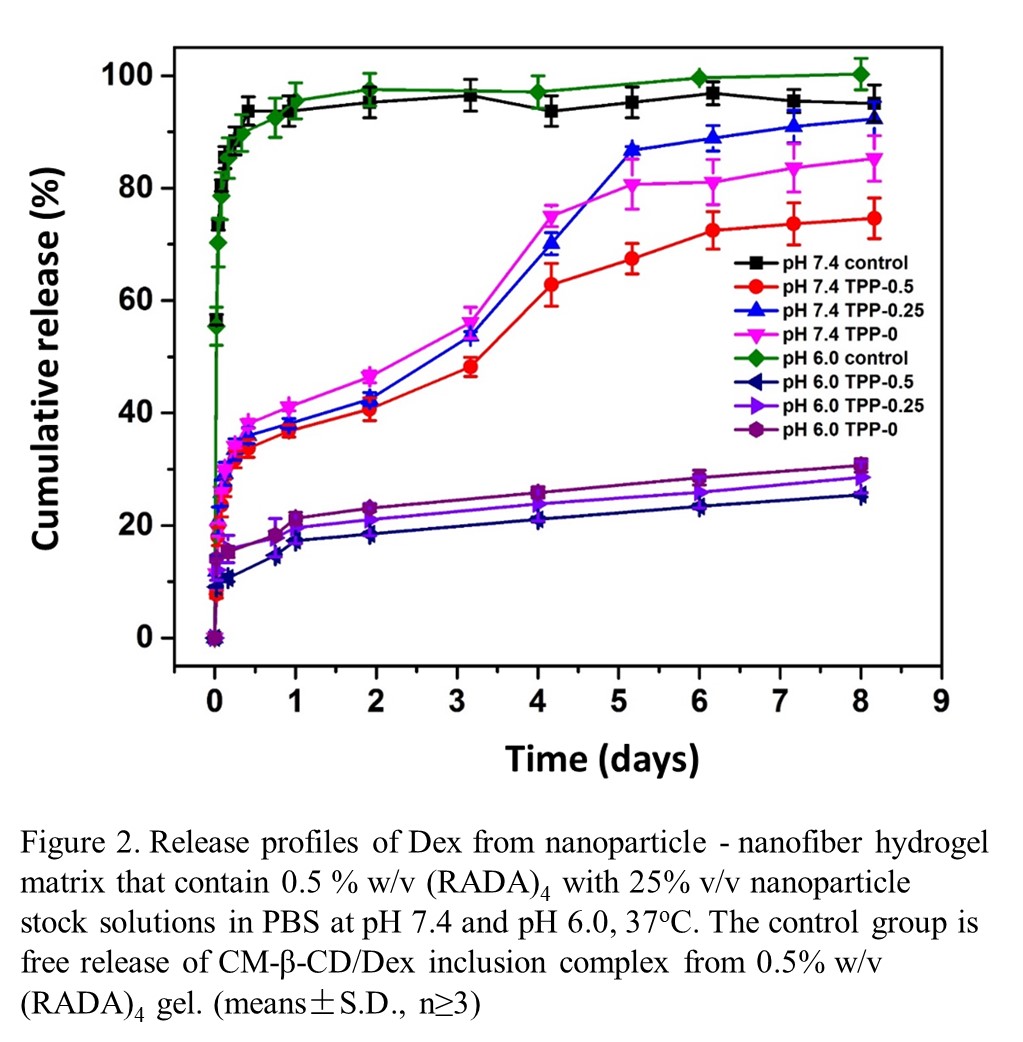Introduction: Self-assembling peptide based hydrogels have a wide range of applications in the field of tissue repair and tissue regeneration. Due to its physicochemical properties and programmability, (RADA)4 has been studied as a potential platform for 3D cell culture, drug delivery and tissue engineering. Despite some small molecule and protein release studies with this system, there is a lack of work investigating the controlled release of hydrophobic compounds (ie. anti-inflammatory, anti-cancer, anti-bacterial drugs etc.) that are important for many clinical therapies. Attempts to incorporate hydrophobic compounds into self-assembling matrices usually inhibited nanofiber formation, rather resulting in peptide-drug complex or microcrystal formations. Herein, a self-assembling chitosan/carboxymethyl-β-cyclodextrin nanoparticle system was used to load dexamethasone, which formed within a self-assembling (RADA)4 nanoscaffold matrix. Nanoparticles were dispersed throughout the (RADA)4 and stabilized by the nanofibers within the nanofiber matrix.

Fig. 1[1]
Materials: Chitosan (CS) was purchased from Yuhuan Ocean Biochemical (China). Drug and reagents were purchased from Sigma (USA). (RADA)4 peptide (≥95% purity) were purchased from RS Synthesis (USA).
Methods: The nanoparticles were characterized by FT-IR and AFM, etc. The size distribution, zeta potential and stability of nanoparticles at different pH and with different incubation time was evaluated by Malvern Zetasizer. Nanofiber-nanoparticle system morphologies were characterized by using AFM. The influence of NPs formulation and concentration on nanofiber formation were evaluated by circular dichroism. The in vitro release from nanoparticle and hybrid system was measured by UV-vis.
Results: Environmental pH dramatically effect on the zeta potential and size of nanoparticle. Nanoparticle impact on the nanofiber formation significantly, however the influence can be controlled by changing nanoparticle/peptide ratio or changing nanoparticle formula. The in vitro release of dexamethasone from the hybrid system at pH 7.4 was observed for more than 9 days, with a zero-order sustained release pattern in the first 6 days. The release rate can be controlled by changing nanparticle formula. However, very low level of drug release happened at pH 6.0 for both nanoparticle and hybrid system.

Discussion: Chitosan is a weak base with an intrinsic pKa of ~6.5. Data suggest that the deprotonating of chitosan in physiological condition lead to the dissociation of nanoparticles, and the dexamethasone drug release. The reason of the impact on peptide secondary structure may due to the surface charge of nanoparticles that may participate in disrupting the ionic self-assembly of (RADA)4.
Conclusion: This system has the potential to form a multifunctional scaffold that can self-assemble with the ability to control the release of hydrophobic drugs for a wide variety of applications.
China Scholarship Council (CSC)
References:
[1] Yokoi H, Kinoshita T, Zhang SG. Dynamic reassembly of peptide RADA16 nanofiber scaffold. P Natl Acad Sci USA 2005;102:8414-9.